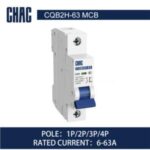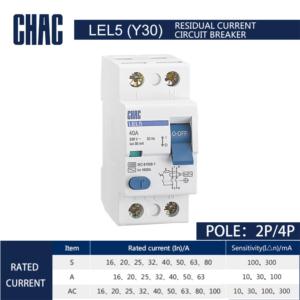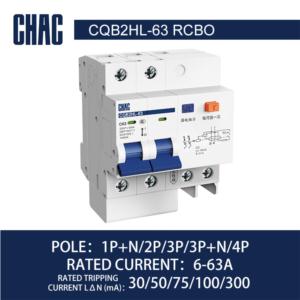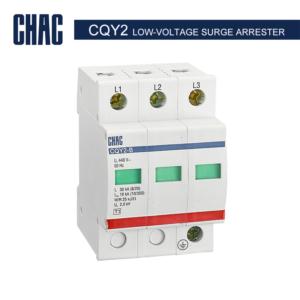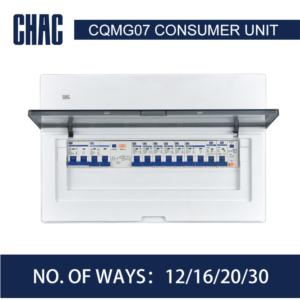Description
The CQB2H-63 10kA Miniature Circuit Breaker is a robust and reliable solution for circuit protection in various settings, including industrial, commercial, high-rise buildings, and civil residences. Designed to provide overload and short circuit protection, this circuit breaker guarantees optimal safety and performance. Its positive isolation feature ensures that the breaker can be safely maintained while the system is energized. With a high breaking capacity of up to 10kA, the CQB2H-63 is built to handle significant electrical loads, making it suitable for demanding environments. Additionally, it comes with a comprehensive range of accessories that facilitate subsequent installations.
Specifications
| Specification | Detail |
|---|---|
| Rated voltage (V) | 230V/400V~(1P), 400V~ (2P/3P/4P) |
| Rated current (A) | 6, 10, 16, 20, 25, 32, 40, 50, 63 |
| Number of poles | 1P, 2P, 3P, 4P |
| Rated short circuit breaking lcn (A) | 10000 |
| Electrical & Mechanical life | Electrical ≥ 6000, Mechanical ≥ 20000 |
| Torque (N·m) | 3.5 |
| Pollution class | 2 |
| Protection degree | IP20 |
| Overvoltage category | Ⅱ, Ⅲ |
| Tripping characteristics | Refer to Table 1 |
| Standards | IEC60898-1, GB/T10963.1 |
Additional Information
Tripping Characteristics (Reference temperature 30℃)
| Test | Curve | Test current ln (A) | Status | Time limit for tripping or non-tripping | Expected result | Remark |
|---|---|---|---|---|---|---|
| a | B, C, D | 1.13ln | Cold | t ≤ 1h | Non-tripping | Current smoothly rises to specified value within 5s |
| b | B, C, D | 1.45ln | Following item a test | t < 1h | Tripping | |
| c | B, C, D | 2.55ln | Cold | 1s < t < 60s (ln ≤ 32A) | Tripping | |
| d | B, C, D | 3ln, 5ln, 10ln | Cold | t ≤ 0.1s | Non-tripping | Switch on the power supply by closing the auxiliary switch |
| e | B, C, D | 5ln, 10ln, 20ln | Cold | t < 0.1s | Tripping | Switch on the power supply by closing the auxiliary switch |
Note: The term “cold” refers to the test being carried out at a reference calibration temperature without load before the test.

